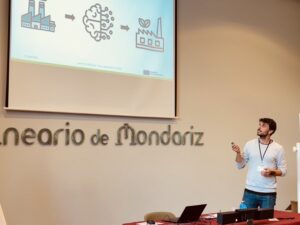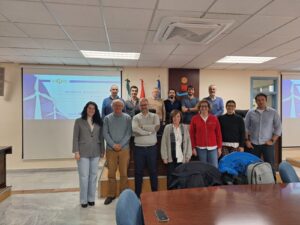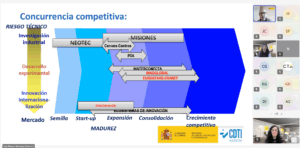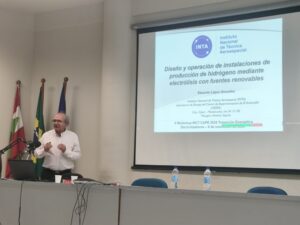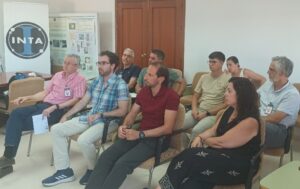- The study, available on the AIHRE website, has been carried out by the company Ariema.
- The document analyses the carbon footprint of renewable hydrogen production and the regulatory frameworks of various business models in this field.
The AIHRE project has financed a technical study that analyses the role of renewable hydrogen, or green hydrogen, as a key energy vector in Spain and Portugal. The report, carried out by the company Ariema, provides an overview of the progress, challenges and opportunities associated with the development of this fuel, which is essential for achieving decarbonisation objectives in the medium and long term.
The study is based on two main points: analysis of the carbon footprint of renewable hydrogen production and the regulatory frameworks of various business models for its implementation. Based on a current diagnosis of the Spanish energy sector, it classifies hydrogen according to its production process and associated emissions. Specifically, the study focuses on renewable hydrogen, as it is the object of study of the AIHRE project.
Carbon footprint analysis
One of the main points addressed in the document is the analysis of the carbon footprint of the different renewable hydrogen production routes. This includes electrolysis with renewable electricity, biomethane steam reforming and biomass gasification. After comparing the different production scenarios, the study shows that electrolysis with renewable electricity has the lowest emissions, followed by biogas reforming and biomass gasification. In comparison, the production of hydrogen from fossil fuels (considered grey hydrogen) generates significantly higher emissions.
Taking into account other renewable energy sources, it is pointed out that, although wind and solar energy have advanced strongly, there are still sectors that are difficult to electrify, such as heavy industry, long-distance transport or the iron and steel industry, where green hydrogen can play a strategic role.
The analysis also establishes that Spain and Portugal have great potential to produce green hydrogen at low cost thanks to their abundant solar and wind resources, and could become hydrogen exporters to Europe.
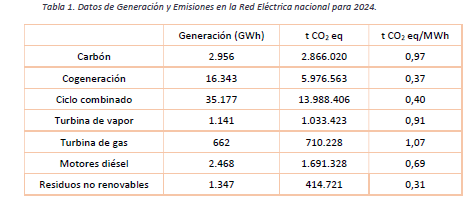
Business models
On the other hand, the project financed by AIHRE also analyses the regulatory framework for three business models related to renewable hydrogen, such as its use in port environments, production from biomass and its application in transport in rural areas. After a review of the European, Spanish and Portuguese regulations in force, the different business models chosen are examined in depth, offering strategic recommendations in each case.
Finally, the study ends with a series of conclusions, which highlight the role of renewable hydrogen as a key element in the decarbonisation of various sectors. Although, as detailed in the document, there are challenges in terms of costs, infrastructure and regulation, the potential of this vector is undeniable, which is why it is essential to promote its research and development. By taking the right decisions in this decade, the countries of the POCTEP area will not only be able to achieve their climate goals, but also to position themselves as European leaders in renewable hydrogen technology and exports.
The full study is available here: https://aihre.eu/wp-content/uploads/2025/05/Estudio-Consultoria-especializada-en-hidrogeno_AIHRE_ARIEMA.pdf


